全球设计风向感谢来自CCDI悉地国际北京室内设计中心的改造空间/民宿项目案例分享:
项目前身为京郊一处家具厂房,在疏散非首都功能的大背景下、被废弃荒置多年,因无人使用堆满了车床杂物。近年由于受到乡村振兴的推动影响,经与多方协商,在不改变原有建筑外围形态条件下,改造为精品民宿。
The predecessor of the project was a furniture factory in the suburbs of Beijing. Under the background of evacuation of non-capital functions, it was abandoned for many years and piled up with lathes because of no one used. In recent years, due to the promotion of rural revitalization, it has been transformed into a boutique hotel without changing the outer shape of the original building after consultation with many parties.
∇ 厂仓改造前现场 The renovation site
∇ 改造前后对比 Retrofit comparison
在被置换的功能概念上,我们希望这次废弃厂房的改造行动,伴随着帝都城郊乡村功能转换,为乡村废弃村产转型提供一个样本参考。
In terms of the functional concept to be replaced, we hope that the transformation of abandoned factory buildings will be accompanied by the transformation of suburban and rural functions, and provide a sample reference for the transformation of abandoned rural properties.
01 #铭记REMEMBER
保留屋面和建筑轮廓Preserve roof and building outline
原厂房位于后白虎涧村村西,紧邻燕山余脉山脚,从院外可见头顶映入眼帘的白石苍林,从院子里直接看到山、是身在城市核心难以企及的风景。
The original factory building is located in the west of Houbaihujian Village, close to the foot of Yanshan Mountain. You can see the white stone and green forest from the courtyard,and this is an unattainable scenery in the city .
∇ 周边环境 Surroundings
厂房作为村西的一小片集群,本身由几所独立车间组成,且村产与民居紧邻,经过数十年的包围,厂房周边已无罅隙,由于西侧紧邻运输铁路护坡,现场退无可退,几乎被包围成了一处秘密“基地”。
As a small cluster in the west of the village, the factoer consists of several independent workshops and close to the residential buildings. After decades of siege, there are no gaps around the factory building. Since the west side is adjacent to the transportation railway slope, the site cannot be retreated, and it has almost become a secret “base”.
在周边对厂房的挤压之下,建筑红线和边界成为了不可改变的既定事实,改造思路因外壳无法变动、只能专注于内核。设计原则借助原屋面坡形和方向、来形成室内布局基础,由“不可移动”的“外”,向“丰富可变”的“内”转移设计重心。
Under the squeeze of the surroundings on the factory building, the red lines and boundaries of the building have become unalterable established facts. The transformation idea cannot be changed and can only focus on the inner core. The design principle uses the original roof slope and direction to form the basis of the interior layout, shifting the design focus from the immovable “outside” to the rich and variable “inside”.
因“厂”而变,因存储丰盛成仓。“厂仓”之名始于此。
Change because of the “factory” and become a warehouse because of the abundance of storage. This is the meaning of the name “factory warehouse”.
02 #新生REBIRTH
集中场景美学,放大空间故事Focus on the aesthetics of the scene and enlarge the story of the space
在场景的初级概念中,我们将“scenescapes”概括为剧场视角下人在空间中特定的活动展现。而随着中国城市多元化的背景语境发展,新芝加哥学派称“场景”为一个地方的整体文化风格或美学特征,并伴随消费背景赋予城市生活以意义、体验和情感共鸣。
In the primary concept of scenes, we summarized “scenescapes” as the display of people’s specific activities in space from the perspective of theater. With the diversified development of Chinese cities, the New Chicago School refers to the “scene” as the overall cultural style or aesthetic characteristics of a place, and it gives meaning, experience and emotional resonance to urban life along with the consumption background.
∇ 厂仓民宿空间的场景层级,由人的行为起始空间序列 The scene level of the factory warehouse space starts with the spatial sequence of human behavior
由场景定义功能出发,我们希望在情景中组合出以下体验,在非局限于居住的空间中,放大民宿在厂仓内核空间的多面性,继而完成场景美学在空间改造中的社会意义。
Starting from the function of scene definition, we hope to enlarge the multi-faceted nature of the core space of the B&B in the factory warehouse in a space that is not confined to living, and then complete the social significance of scene aesthetics in space transformation.
∇ 场景集合—“scenescapes” Scene Collection—scenescapes”
内核的裂变、功能的叠加Core fission, superposition of functions
秉持内核延续的原则, 我们保留了建筑空间本身的形式,但考虑到人在空间中的行为适应,空旷的厂房被划分出公共客厅、娱乐、居住等区域,以功能升级区分焕新。
Adhering to the principle of continuity of the core, we retain the form of the building space, but taking into account the behavior adaptation of people in the space, the empty factory buildings are divided into public living rooms, leisure areas, bedrooms and other areas, which are renewed by functional upgrades.
∇ 屋面—原空间—分隔后空间形态 Roof—original space—space form after separation
原厂房空间在斜面坡最高点近7米,高点给予了发挥改造的充分自由,而斜屋面也带来空间的浪费。
The original factory space is nearly 7 meters at the highest point of the inclined slope, and the height of the space gives full freedom of transformation. Meanwhile, the inclined roof also caused a waste of space.
因旧建筑的东西方向为斜坡屋顶构造,我们结合旧建筑本身的屋顶朝向,进行房间类型的设计,将不同空间设计成不同适应风格,又按照不同的空间高度将其划分loft与平层两种房间形式,最终组合出如下图空间:1间门廊+公共客厅、2间北侧大LOFT、2间南侧小LOFT、1间西侧坡屋面平层、1间公卫+娱乐房间。
Because the east-west direction of the old building is a sloped roof structure, we combined the roof orientation of the old building to design different spaces into different styles, and dividing them into loft and flat rooms according to different space heights, finally combined into the following space: 1 porch + public living room, 2 large LOFTs on the north side, 2 small LOFTs on the south side, 1 flat roof on the west side, and 1 public bathroom + entertainment room.
∇ 各空间拆解后的主构成层级 The main composition level after dismantling each space
整个民宿经门廊进入,在客厅和两间大loft占据了主厂房规划条件下,客厅做了下沉空间,多功能围榻,并拆除原封堵三角窗,引入南向自然光线。
The entire factory warehouse enters through the porch. Under the planning conditions that the living room and two large lofts occupy the main factory building, the living room has a sunken space and a multi-functional couch, and the original blocked triangular windows are removed to introduce natural light from the outside.
∇ 入户门廊 Entrance porch
∇ 客厅全景 The living room
北侧两间大LOFT利用层高优势增加夹层,并与客厅连接位置设置露台,与露台对望的墙面增加了书架山墙,充分利用了原高作为主题功能,增加人在空间内的互动,丰富活动场景的可能性。
The two large lofts on the north side take advantage of the height of the space to increase the mezzanine, and set up a terrace in the connecting position with the living room. The wall facing the terrace is added with a bookcase gable, which makes full use of the original height as the theme function and increases the interaction of people in the space to enrich the possibility of event scenes.
∇ 北侧夹层露台 Mezzanine terrace on the north side
∇ 南侧书墙 Book wall on the south side
而为了创造更好的体验环境,设计师设置了多种形式的照明设计,在空间顶部、中部、低空区域均设置隐藏灯带、点状光线、射灯等,使客厅空间在昼与夜两种环境氛围中,都能有不同光环境感受。
In order to create a better experience environment, the designer set up hidden light strips, spot lights, spotlights and various lighting designs at the top, middle and low-altitude areas of the space, so that the living room space can give people a different feeling of light in both day and night environments.
客厅北侧两间大LOFT经客厅露台连接,受到日出东西的光照影响,分别归于明暗的两种不同主题演绎。东侧LOFT利用日光将纯白贯彻到底,西侧LOFT则成为雨林元素与泡池的融合。
The two large lofts on the north side are connected by the living room terrace, and are affected by the sunrise light to interpret two different themes of light and dark. The east side LOFT uses daylight to carry pure white into the space design, and the west side LOFT becomes a fusion of rainforest elements and bubble pools.
∇ 北侧大 LOFT-01-暗环境中雨林和泡池元素 LOFT-01 on the north side-rainforest-bubble pool elements in dark environment
∇ 北侧大 LOFT-02-利用东向日光凸显白色主元素 LOFT-02 on the north side- uses eastward daylight to highlight the white elements
为了规避斜屋面带来的限制,客厅南侧两处小LOFT根据限高优化开洞,房间居住核心放弃“层”的概念,作为“巢”直接上移,因小而弱化日常功能,将必要功能和空间组件结合。
In order to avoid the restriction brought by the sloping roof, the two small LOFTs on the south side of the living room optimize the space according to the height limit. The residential core of the room abandons the concept of “layer” and moves directly upward as a “nest”, weakening the daily functions due to its small size, and combining necessary functions with spatial components.
∇ 南侧小 LOFT-01-轻工业风格 LOFT-01 on the south side-light industrial style
∇ 南侧小 LOFT-02-原木盒子 LOFT-02 on the south side-native style
最西侧的联排厂房,由于空间本身平层层高,该房间原为木工家具厂的喷漆车间。客厅与其连接位置是厂房的玻璃走廊,在改造过程中予以保留,用于光线在西侧的倾斜挥洒。
The westernmost townhouse was originally the painting workshop of a woodworking furniture factory. The living room and its connecting place are the glass corridors of the factory building, which were preserved during the renovation process and used to sway light on the west side.
∇ 玻璃砖的质感与倾泻而下的阳光形成通透的入口关系 The texture of the glass brick forms a transparent entrance relationship with the pouring sunlight
弥补了西侧自然光缺失的缺陷 It makes up for the lack of natural light on the west side
∇ 西侧平层客房入口 Entrance of flat-floor room on the west
在其空间结构上,设计师保留了建筑本身的木梁框架,将外部排气井改造成绿植窗井,遮蔽了西部铁道嘈杂的环境,保证通风换气。
In terms of its spatial structure, the designer retained the original wooden beam frame of the building, and transformed the external exhaust well into a green window well, shielding the noisy environment of the western railway and ensuring ventilation.
进入房间内,西墙整体为日落时刻的采光墙,开窗与关窗之间,虚虚实实,真真假假,形成一种空间的互动体验。
Entering the room, the west wall is a lighting wall at sunset, and the light between the open and closed windows is virtual and solid, forming a spatial interactive experience.
∇ 绿意渗透的开合“窗井”-为原厂房排气井 The “window well” permeated by greenery-is the original factory exhaust well
设计师除却空间本身的构造,更强调“光”的运用,当光在空间中达到某种平衡,空间也在一定程度被创造了另一种舒适感。因此屋面的形态即使没有被改变,但是通过内部功能的调整找到了某种平衡。
In addition to the structure of the space itself, the designer puts more emphasis on the use of “light”. When light reaches a certain balance in the space, the space also creates another sense of comfort to a certain extent. Therefore, even if the shape of the roof has not been changed, a certain balance has been found through the adjustment of internal functions.
纵观厂仓,光一直在空间中扮演了特殊角色,围绕客厅的三个居住区域有了不同高度的呈现。在白天,自然光线又可以通过南北朝向的斜坡屋顶、穿过与客厅衔接的玻璃廊道,照进客厅,使客厅整个空间在白天都可接收到自然光线。
Throughout the warehouse, light has always played a special role in the space, and the three living areas surrounding the living room are presented at different heights. In the daytime, natural light can pass through the sloping roof through the glass corridor connecting with the living room, and shine into the living room, so that the entire space of the living room can receive natural light during the day.
04 #延续EXTEND
材质作为元素介入成为每个空间的主题Material intervention as an element becomes the theme of each space
北方民居代表材质“红砖”作为厂仓的主要元素,延续了原厂房豁达肌理感,客厅和公共门廊,都是以此为材质基础延续感官。
The representative material of northern dwellings, “red brick”, as the main element of the factory warehouse, continues the open-minded texture of the original factory building. The living room and public porch are based on this material to continue the senses.
根据各个空间的主题,设计师对材质有所摘取,以主材颜色搭配主题功能,去装饰化,明确了各个空间代表性材质、以此作为房间的代表语汇。
According to the theme of each space, the designer picks up the materials and uses the main material color to match the theme function, de-decorates, and clarifies the representative materials of each space as the representative vocabulary of the room.
∇ 材质语言即空间主题 Use material language as the space theme
作为后院民宿产品的再一次迭代更新,厂仓遵循造利旧原则,延续了建筑自有时代记忆,保留了空间屋面与分隔形式。
As another iterative update of the backyard homestay products, the factory warehouse follows the principle of making good use of the old, continues the building’s own era memory, and retains the space roof and partition form.
改造原则力求在限制条件中表达设计张力,从在地环境中提取适用元素进行设计,并在此之上延伸,结合文化、艺术、人文等多维角度,诠释了在城市更新、乡建发展的背景下、老旧厂房建筑转换新生的社会价值。
The transformation principle strives to express the design tension in the restricted conditions, extracts applicable elements from the local environment for design, and extends on top of it, combining culture, art, humanities and other multi-dimensional perspectives to interprets the social value of the transformation of old factory buildings under the background of urban renewal and rural development.
项目信息
项目名称:厂仓民宿改造
设计单位:CCDI悉地国际北京室内设计中心
公司网站:www.ccdi.com.cn
联系邮箱:GWdesign@yeah.net
项目设计 & 完成年份:2019.12—2020.08
主创及设计团队 主创:李秩宇设计团队:王骁夏、曾荟凡、张莹、李霞、李田田、龚磊、祁长亮
酒管团队:后院驿站精品民宿
项目地址:北京市/昌平区
建筑面积:380㎡
摄影版权:鲁飞、任恩彬
主要用材&品牌 主要用材: 红砖、原木饰面、绿色马赛克、复古拼花瓷砖、编织地毯、石塑地板、哈比特板品牌:Gabriel布艺,维孚编织地毯,普隆石塑地板,圣戈班哈比特板
设计撰文:王骁夏
Project name:Factory warehouse renovation
Designed by CCDI Beijing Interior Design Center
Website:www.ccdi.com.cn
Contact e-mail:GWdesign@yeah.net
Design year & Completion Year:2019.12—2020.08
Leader designer & Team Leader designer: Li ZhiyuTeam: Wang Xiaoxia, Zeng Huifan, Zhang Ying,Li Xia, Li Tiantian, Gong Lei,and Qi Changliang.
Hotel Backyard Inn Boutique B&B
Project location:Beijing / Changping district
Gross Built Area (square meters):380㎡
Photo credits:Lu Fei,Ren Enbin
Brands / Products used in the project Materials: red bricks, log veneers, green mosaics, retro mosaic tiles, woven carpets, stone plastic floors, Habit boardsBrands : Gabriel,Wayflor,PuLong,,Saint-Gobain
Editor:Wang Xiaoxia

















































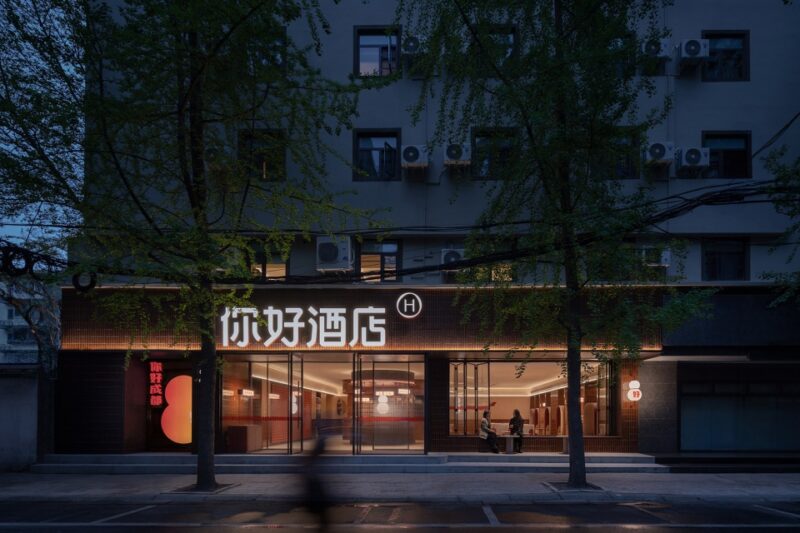
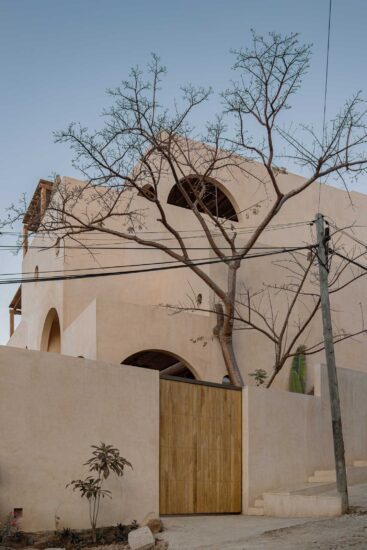
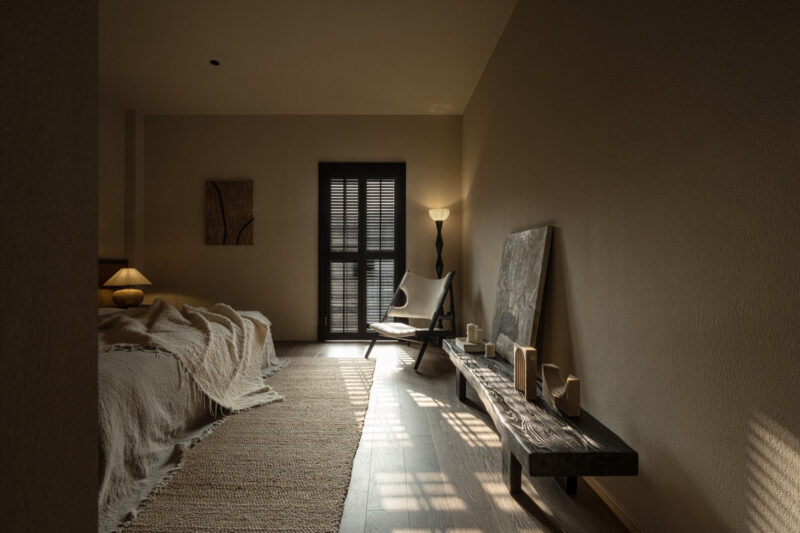
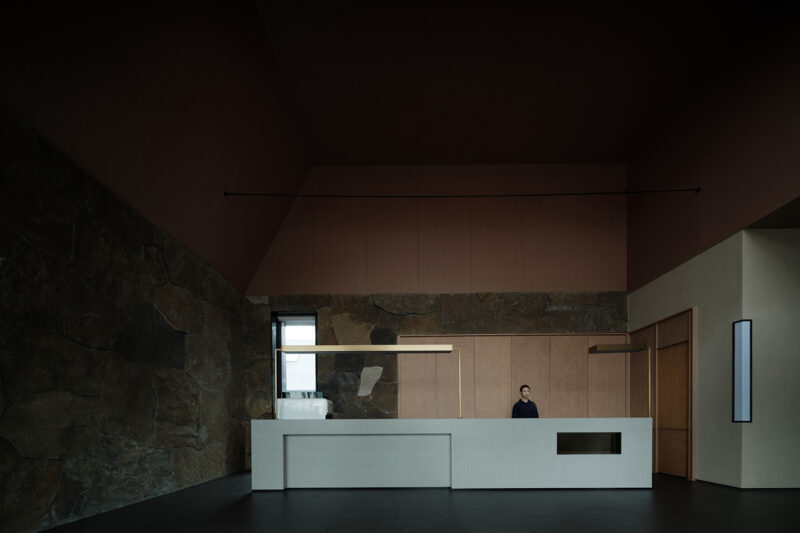
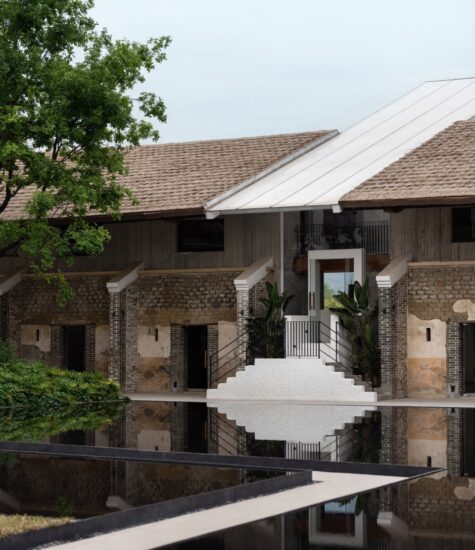
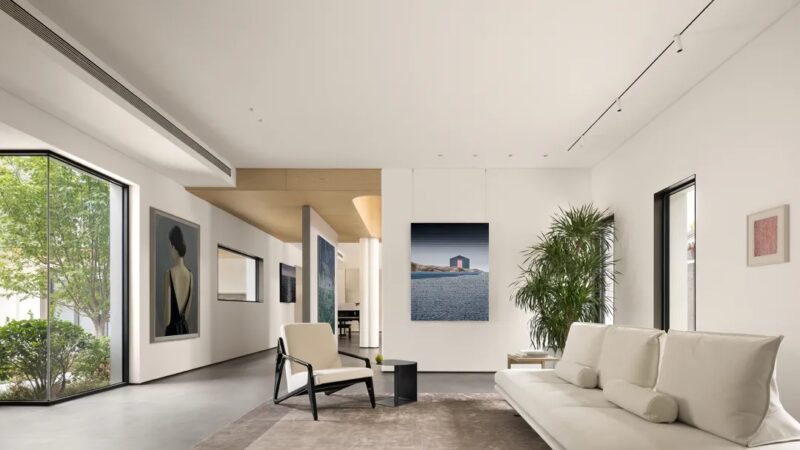
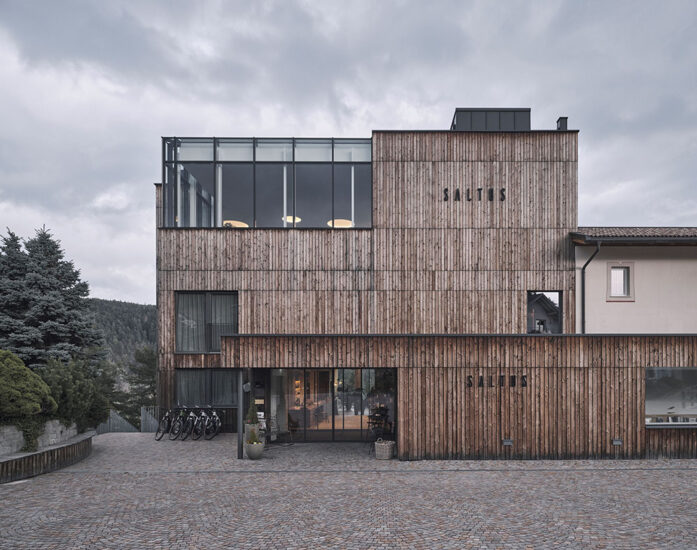
评论(1)
玻璃隔断隔音应该比实墙差一点